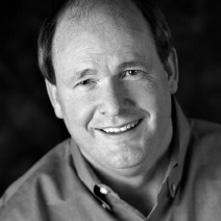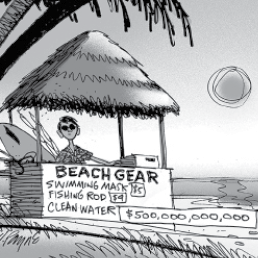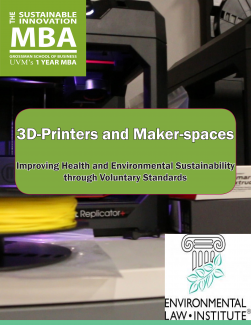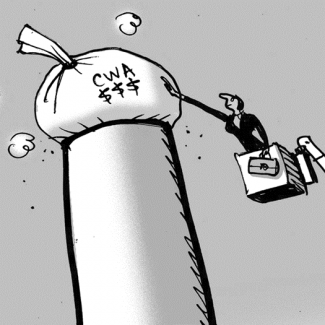Contrary to the impassioned counsel of William D. Ruckelshaus, his EPA administrator, President Richard Nixon vetoed the Clean Water Act of 1972, stating in part “that we attack pollution in a way that does not ignore other very real threats to the quality of life, such as spiraling prices and increasingly onerous taxes. . . . Even if Congress defaults on its obligations to taxpayers—I shall not default on mine.”
Senator Edmund S. Muskie, Democrat of Maine, perhaps the single most important proponent of the bill, thundered back, “Can we afford clean water? Can we afford rivers and lakes and streams and oceans which continue to make life possible on this planet? Can we afford life itself?” Two hours later, the Senate voted 52-12 to override the veto, and the House followed with an astounding vote of 247-23. The CWA became the law of the land.
This monumental step taken 50 years ago, on October 18, 1972, highlighted fundamental issues that continue to govern debate on protecting the environment: how clean is clean, how much are we willing to spend, and how can we incorporate the best technology and practices to achieve our best answer to the first question, with the lowest cost answer to the second.
We argue here that while Senator Muskie was a visionary in 1972, President Nixon’s words have come back to haunt us 50 years later, even if for reasons he could not have imagined. We make this case recognizing that parallels to 1972 are uncanny—for today the country is preparing the largest federal investment in water infrastructure as part of the American Rescue Plan and the Infrastructure Act since the construction grants program funded by the CWA in 1972.
The CWA regulatory structure and complementary federal funds delivered one of the great policy successes in history. Yet, mainly due to that success, the ARP and infrastructure investment today risks being ineffectively spent at best, and mis-spent at worst—which would be a tragic missed opportunity. Changing that outcome may require modifying the statute today with the same courage and foresight that was evident in 1972.
The hallmark of the CWA is its function as a technology-forcing statute. In 1972, the Senate, borrowing on experience from the Rivers and Harbors Act of 1899, championed the radical approach of prohibiting discharges of pollutants, mainly from “point source” industrial and municipal wastewater treatment plants, unless governed by standards imposed by a permit. Standards are developed by analyzing what is achievable by the best available technology, without needing to assess the water quality of the receiving waters. The goal is to achieve waters that are fishable and swimmable by eliminating pollution as technology standards ratchet down over time. Hence the name: the National Pollutant Discharge Elimination System.
Also included in the CWA were improvements championed by the House to the existing system featured in the CWA’s predecessor laws dating back to 1948, which authorizes states to develop standards based on the quality of the receiving waters. Water quality standards were criticized as ineffective prior to 1972 and took a back seat to technology standards for years. Today, these standards are gaining a new life in the Total Maximum Daily Load program. Water quality standards, when they are successful, still aim mostly at the same target: point source dischargers, often adding additional limits to a NPDES permit.
Looking back, Senator Muskie was right: the CWA technology-based permitting system, along with the grants program that helped build a generation of treatment plants, has been a spectacular success. In 1972, my hometown waterway—the Cuyahoga River—was famously flammable, and in one species count, exhibited six fish (not species—six fish!). Today, the Cuyahoga River is home to more than 60 species of fish. The best bass fishing on the Potomac River, once called a stinking disgrace by Secretary of the Interior Walter Hickel (and mistakenly attributed to President Johnson), is just downstream from the District of Columbia Water and Sewer Authority’s (“DC Water”) huge Blue Plains Wastewater Treatment plant. Look down when you fly into Washington Reagan airport—you may be able to see water emanating from the plant creating a clean blue oasis surrounded by the often-brown water of the Potomac.
Herein, though, lies the lesson. Blue Plains treats about 300 million gallons of wastewater every day—enough to fill a professional football stadium. Most of this water comes from the Potomac, which after its use by people in a 725-square-mile region surrounding Metropolitan Washington, is transported to Blue Plains through 1,800 miles of pipes. Over time, as clean water standards have tightened, Blue Plains has removed an ever-larger percentage of pollutants before recycling the water back into the Potomac, which has therefore seen spectacular improvements.
The technology-forcing approach is relentless though, for the standards continue to ratchet down even as the costs rise, often exponentially. Take nutrients, the byproduct of the food and waste we flush down our toilets and sinks as well as animal waste, chemical fertilizers, leaves, and other organic refuse that wash off our streets, yards, and natural lands. If too many of them flow into our rivers, they function just like fertilizer. Algae and other plants thrive and die—a lifecycle that absorbs oxygen—and other organisms, including fish, oysters, and many other species, literally choke from the lack of oxygen.
In 2000, Blue Plains adopted the first phase of technology required under the CWA to reduce the concentration in its effluent from 14 milligrams per liter to 7.5 mg/L, which removed 7.3 million pounds of nitrogen per year at a cost of just more than $16 million. In the next phase, which ended in 2010, Blue Plains reduced nitrogen concentrations to 5 mg/L, which amounted to a reduction of 2.9 million pounds per year at a cost of about $130 million—about eight times the original price tag. In 2010 the permit ratcheted down again, mandating that the facility further reduce nutrients to 4 mg/L, or an additional reduction of 1.2 million pounds per year. This incremental reduction cost nearly $1 billion. The capital cost to remove one pound of nitrogen thus increased about 380 times. What was a budgetary hiccup became a major expenditure for Blue Plains and the ratepayers it serves.
The rote application of technology-based standards triggers an even more staggering consequence in the systems that address an ancient challenge: how to manage sewage and stormwater collection in our cities. Hundreds of older urban communities were built with sewers that collect both sanitary flows and stormwater runoff in the same pipe—called combined sewer systems, or CSS. Other cities have separate sanitary sewer and stormwater systems, which goes by the abbreviation MS4. Some cities have both.
Combined sewers fill with stormwater in larger storms and were designed to overflow during these events—sending untreated sewage and stormwater conveying all the detritus of city streets, parking lots, lawns, and the rest, to local waterbodies. Separate sewers are also prone to overflows of sewage due to blockages and lack of maintenance. MS4 pipes convey stormwater directly to local waterbodies, with many of the contaminants just mentioned but virtually no treatment prior to discharge in every rain event. Sanitary System Overflows are known as SSOs and Combined System Overflows are CSOs. Together with MS4 discharges, all three violate the CWA by threatening water quality, public health, and the environment.
EPA reported to Congress about this challenge in 2004—still one of the best summaries of the issue. The agency said that 746 communities had combined systems, with 9,348 CSO outfalls that discharged about 850 billion gallons of untreated sewage and stormwater per year. EPA estimated that between 25,000-75,000 SSOs occur each year, releasing an additional 3 to 10 billion gallons of untreated sewage—in this case not only to waterways, but to basements and city streets as well.
Remarkably, EPA’s first major CSO policy statement was in 1989, followed by guidance in 1994 and 1995, and then the first major implementation date for the so-called “nine minimum controls”—25 years after the passage of the act. There are many reasons for this enormous lag in performance, which in large part comes down to the difference between working “inside the fence” and “outside the fence” of treatment facilities.
First came improvements to treatment plants that involve adapting technologies and building new structures into existing facilities. Maintenance and upkeep follow—but within the controlled and visible environment “inside the fence.” Most publicly owned treatment plants are more alike than different, and uniform effluent standards are therefore easier to develop and apply.
Second came improvements to sewer and stormwater collection systems—which means working in the city, with the cost of the new equipment dwarfed by the reality of digging up streets. Maintenance and upkeep are more difficult, requiring crews that maintain a sprawling system “outside the fence” but hidden from the public and utility alike. The structure of combined and separate systems in each city is as diverse as the thousands of cities themselves.
The difference in venue is compounded by the answer to an ancient debate: should sanitary sewage be captured in pipes that are separate from the pipes that capture stormwater runoff, or should these flows be combined? From the beginning, there has been a fascinating interplay between technology and the solutions to wet-weather flow.
The common denominator, though, is that the expense of managing sewage and stormwater flows is immense—and involves not just the design of treatment and technologies, but the design and function of every city street, commercial building, residence, and public space. In this context, most consider combined sewers the overriding challenge, but a closer look suggests a more nuanced set of pros and cons.
Combined sewers in dry (non-storm) flow conditions, and at the first flush in wet weather, can intercept most of the flow and convey it for treatment—a clear positive. The first flush in any rainfall event includes the most contaminants and refuse, and channeling that flow for treatment is very beneficial. Yet in major rain events, combined systems overflow to urban waterbodies—a clear negative.
Separate sanitary systems intercept all sewage flow for treatment—a clear positive, although these systems are also subject to blockages and overflows. The MS4 system routes stormwater out of city streets—a clear positive. Yet the separate stormwater flow receives little or no treatment prior to discharge to urban waterways—a clear negative.
For either situation, the CWA is clear. The statute prohibits discharges of pollutants unless governed by a permit based on achievement of technology and/or water quality-based standards. In practice, though, applying standards to such complicated systems has yielded a fascinating combination of site-specific management requirements paired with preferred, if frequently rudimentary, technological requirements.
For combined sewers, as an example, EPA and states develop standards from an amalgam of modeling conjecture paired with an evaluation of common control technologies. Since events that trigger a violation are related to the capacity of the CSO system to manage stormwater flows, the best available technology is founded on increasing that capacity with a variety of hard or gray infrastructure solutions. Most common is either replacing combined systems with separate sewage and stormwater pipes (with all the pros and cons noted above), and/or the building of storage basins of various designs and deep storage and conveyance tunnels to capture overflow until after the rainfall and excess flow recedes. Importantly, many cities now are building green infrastructure that can capture and retain or delay stormwater before it reaches the combined sewer or MS4 system.
This approach made sense when it came to the forefront in the 1990s. Rainfall and flow modeling based on data from selected hydrologic years predicts how much excess flow is to be managed and where, and how many overflow events are likely to occur. The utility is required to implement a set of nine control mechanisms to gain relatively speedy reduction in the number of overflows, followed by the negotiation of an aptly named Long Term Control Plan to reduce the number and volume of overflows to a magic number predicted in the models over the following 20 to 25 years.
The result is that although the language and process of a NPDES permit is used, the approach is actually like a site-specific negotiation more typical for water quality standards based on the conditions in the system. But the technology-based rigidity takes the lead in the final plan—for the analysis often boils down to a target number of overflows that are projected to occur in any given year, which look awfully like common discharge limitations in a NPDES permit.
This approach makes sense until the cost of the solution is considered, in parallel with assessing whether reducing overflows to a specific number is the optimal use of public funds to improve water quality. Let’s return to Washington to understand this approach. All three of DC’s main waterways were polluted each year by more than 3 billion gallons of untreated sewage and rainwater overflowing from antiquated combined sewers. Moreover, peak wet-weather flows of up to 1 billion gallons per day arriving at Blue Plains during storm events did not benefit from full treatment.
In response, as outlined in its NPDES permit and two consent decrees, DC Water has been required to implement the nine minimum controls at a total cost of $40 million, which reduces projected overflows by 40 percent. Then it must expand the capacity of secondary treatment at Blue Plains for peak flows and extension of the tunnel system to capture additional flow prior to treatment at a total cost of more than $900 million, which reduces nutrient discharges and increases the CSO capture percentage. Last, it expanded the capacity of the collection system to store and convey peak flows by building giant underground tunnels, including building additional treatment for excess flow at a cost of more than $2.5 billion, with projected additional reduction of overflows by 56 percent.
DC Water avoided the other common solution, except in limited areas, which is to reconstruct combined systems into separate storm and sanitary. For DC, and most other cities, this option is cost prohibitive. After years of difficult negotiation, DC Water added a pilot to test whether green infrastructure, or GI, might become a more important part of the solution. If successful, it would eliminate the need for one of the planned tunnels. Each solution, including GI, is expensive to plan, design, and implement—and involves disruption to the community during construction.
Today, after more than ten years of construction, DC residents are seeing steady improvements to water quality. Yet they will never see the main solution, which is the most expensive public works project since the construction of the Metro system, because it is hidden underground and sits idle until a storm hits. (In comparison, a heralded school rebuilding program was targeted to spend $1 billion.) This solution has caused sewer rates to increase by a factor of three—from just about $40 a month to more than $120 a month, with further rate increases projected for the next decade at least.
Hundreds of CSO cities face challenges and costs of this magnitude: Northeast Ohio Regional Sewerage District serving the metropolitan Cleveland area is building a $3 billion solution; Kansas City faces a $2.5 billion bill, with St. Louis perhaps facing the highest cost at $4.7 billion. Medium and smaller cities face enormous costs as well, from an initial projected cost of more than $3 billion in Cincinnati and $1.4 billion in Buffalo to nearly $900 million for South Bend, Indiana.
Readers should step back and consider the size and scale of these numbers. The CWA is requiring expenditures that dwarf municipal budgets and present grievous affordability challenges for low-income ratepayers and transfer precious local funds from other priorities for schools, housing, and the rest. I can imagine what President Nixon might have said about these costs. We can also imagine how Senator Muskie would have responded, voiced today by environmental and community activists, “Can we afford not to have clean water? Can we afford life itself?”
Muskie and Nixon were both right. The senator was right that an investment in clean water is protecting life itself, and in economic terms, can be a wonderful investment. Improvements at Blue Plains have helped the revitalization of the Chesapeake Bay. The Maryland Department of Natural Resources in 2004 placed the value of the Chesapeake Bay to Maryland and Virginia at more than $1 trillion, with an annual economic benefit of $33 to $60 billion. We support investing in clean water if we believe the money is being invested in the right projects and is accomplishing the right outcomes.
Yet Nixon was right too—society must be careful about the expenditures of such vast sums of public money. The CWA’s strength is its relentless drive to mandate technology-based standards to drive down pollutants. Its weakness is that there is no mechanism to place this process on hold once the costs overwhelm the benefits, or to shift focus to different sources and solutions.
Let’s turn to Cincinnati and South Bend to explore this concept. The Metropolitan Sewer District of Greater Cincinnati serves a population of 850,000, spread across 290 square miles. MSD manages both combined and separate sewer systems, which were estimated to overflow 11.5 billion gallons of combined sewage into the Ohio River and its tributaries every year. Applying the standard NPDES process to solve this problem—modeling of overflow volumes and events paired with the setting of standard solutions, mainly deep tunnels and additional storage—EPA estimated the cost to be $3.1 billion in 2002.
In my experience, groundbreaking innovation occurs when a team of the right people come together to face what seems like an insurmountable challenge. This was the scenario for MSD: a $3.1 billion price tag was unimaginable for a region comprised of many low-income neighborhoods and a struggling rust-belt economy. MSD Director Tony Parrott, Deputy Director Biju George, Watershed Director Mary Lynn Loder, and Principal Engineer Reese Johnson, along with a few bright and creative consultants started to develop an alternative solution.
The first flaw they discovered was the use of modeling to accurately predict future overflows, which drove the selection and scale of the remedy. When comparing actual data to the model, the team was stunned with how often it was wrong: over- or under-predicting overflows. The solution was to recalibrate the model after each event, and to add significant margins of safety just to be sure. The result, though, was to drive remedies to a larger and more expensive scale, with the parallel risk that these solutions would in fact be more than needed in some places, and less in others.
A simple question from Biju George triggered a revelation. “Why can’t the data be the model?” As sensor technology, computer power, and use of predictive models were expanding with rapid speed, the team began to consider how a model based on data from past years could be replaced by a model that reflects events in real time. This is not really a model, but a “virtual twin” that integrates current rainfall and discharge data along with data from digital sensors to provide operators with an accurate picture of exactly what is happening in the system, which then can be paired with algorithms to improve real-time control decisions on how to respond.
The next revelation came after the virtual twin “turned on the lights” in the sewer system. Assets associated with MSD’s Mill Creek Interceptor, both upstream and downstream, had been managed separately as point sources or facilities, but never as a system. Building the virtual twin revealed that rain does not fall uniformly and that different parts of the system overflowed at different times, and that adding carefully located gates and storage to hold some flow in certain places enabled more capacity for flow in others, optimizing the performance of the system and decreasing overflows.
To improve water quality, the team also learned the importance of determining when flow is captured for full treatment, rather than just the total quantity. Capturing most of the first flush for treatment yields far more water quality benefits than capturing larger quantities of flow later in the storm. The real-time system, gates, and storage can be manipulated to ensure this outcome.
Developed without any certainty that EPA and state officials would accept the approach, MSD implemented a strategy that reduced overflows by 250 million gallons at a savings of 90 percent compared to the 2002 consent decree. The MSD team had reduced the cost of capturing combined sewage from almost 25 cents per gallon to a single penny. After years of patient negotiation, regulators finally accepted this outcome.
At nearly the same time, the city of South Bend, an urban area of 100,000 residents with more than 20 percent living in poverty, faced a similar challenge. Just a year after Cincinnati’s 2002 consent decree, South Bend entered negotiations on its Long Term Control Plan. The determination, once again relying on hydrologic year models and tunnels and storage, would cost between $800-900 million. The consent decree memorializing the LTCP was signed in 2011, with the model-generated number of overflows to be reduced from approximately 80 times a year to only four.
Just like MSD, a group of public servants and consultants banded together to find an alternative—since the price tag was unimaginable for a small Rust Belt city with high poverty levels. South Bend also devised a program premised on real-time data from rainfall, discharge, and digital sensors. Turning on the lights yielded a similar outcome: a virtual twin that optimizes existing capacity, enhanced by targeted additional storage, reduced overflows by 70 percent at a cost reduction of $500 million when compared to the 2011 consent decree. After a decade of patient and persistent effort, EPA and the Department of Justice approved a modification to their consent decree memorializing this new approach in 2021. South Bend’s Mayor Pete Buttigieg, now President Biden’s secretary of transportation, ran for president partly on the prowess of this smart sewer approach.
Deploying sensors and artificial intelligence has benefitted sanitary sewer systems as well as combined sewers. In San Antonio, Texas, the challenges were blockages, back-ups, and overflows. Each blockage could cause an overflow of pure sewage into waterways, basements, and city streets—and triggered the immediate deployment of crews to stop the discharge and clean up the sewage, seeking to minimize the damage to public health and the environment, not to mention property and commercial losses.
EPA and the San Antonio Water System, SAWS, entered into a sanitary sewer overflow consent decree to govern a response. EPA’s best technology response for SSOs is outlined in its Capacity Management Operation and Maintenance program that outlines an inspection and cleaning practice modeled from data based on past overflow events (sound familiar?). The SAWS program based on CMOM was estimated to cost $1 billion.
Facing such a staggering bill, SAWS officials also felt compelled to find an alternative and began working with technology providers to deploy sensors underneath manhole covers to provide real-time data on sewer flows. Automated software spotted anomalies: if a blockage was upstream of the sensor, the flow would start to decrease because the blockage would act like a dam holding back flow. If the blockage was downstream from the sensor, the flow would rise as sewage backed up behind the blockage, again, just like a dam. In both cases, though, crews were dispatched to investigate and if need be, clear the blockage long before it became severe enough to cause an overflow.
Turning on the lights again drove dramatic results. Rather than dispatching crews to clean on pre-scheduled cleanings, crews were only dispatched when actual problems were revealed by real-time data. SAWS reduced the 1,246 anticipated cleanings to 65 actual. Yet with the 95 percent decrease, SAWS’s program simultaneously eliminated many SSO overflows and is credited with 216 SSO “saves”—blockages that were discovered and resolved before an overflow was triggered. The return on investment for SAWS is estimated to be 115 percent.
Today, these approaches and their technologies continue to evolve rapidly. Many cities are reaping the considerable benefits from turning on the lights, from the Buffalo Sewer Authority, which has saved at least $400 million in its LTCP plan while reducing overflows more quickly than planned, to Grant Rapids, Michigan, which has reduced the infiltration and inflow into its sanitary system that was causing overflows at a cost of $30-50 million rather than the projected $1 billion.
Tony Parrott, whom we last saw in Cincinnati, is now the general manager of the Louisville and Jefferson County Metropolitan Sewer District. He has perhaps the best story to tell. Louisville was one of the early adopters of real-time controls, and is using discharge and rainfall data, and sensors installed throughout a watershed, to target every tool in the arsenal—condition and discharge data to prioritize updates to treatment facilities, a virtual twin that enables both automatic use of gates and local storage to maximize storage in the collection system, flow sensors to identify sanitary blockages before they happen, and flow data to target the best locations for GI to retain stormwater in beautiful local greenways. He has achieved a second modification of Louisville’s consent decree. It now contains perhaps the most ambitious integrated plan, which targets scarce public funds to the greatest risks.
The reality of these stories, though, is that they turn the CWA on its head. No longer is the CWA forcing the adoption of new technologies. Without intervention, the CWA, EPA, and state regulators drive the implementation of solutions that are steeped in the technologies of the past, are extraordinarily expensive, and frequently yield meager environmental results. Municipalities seeking to protect the environment without facing financial oblivion take matters into their own hands and devise alternative solutions. Although most have ultimately been able to gain approval for these directions, cities endured years of diligent, expensive, and persistent efforts to persuade risk-averse regulators.
This reality must change. The good news is that many in EPA and the states understand that change is possible, and various written policies support these directions. For example, the agency now encourages a utility to adopt integrated planning—which assesses all the needs for the facility to support a plan to target the most efficient and effective steps to improve water quality in a series of steps, rather than the rote application of the next reduction in standards driven by whatever permit provision comes next. This is a step in the right direction, but far more must be done.
First, the CWA should be updated to shift the focus from best available technologies on individual point source discharges, to turning on the lights on the real-time conditions of treatment plants, sewage and stormwater collection systems, and the watersheds in which they reside—as a system. Based on existing discharge information and available weather data, mandating the deployment of sensors will deliver insights on the health of each waterbody, and where and how public dollars can be spent to yield the best improvements to water quality.
In this manner, we can finally integrate the two systems incorporated into the CWA in 1972. Rather than being separate from water quality-based standards, technology will enable us to understand the water quality of a system, identify sources of pollutants and problems, and target the best new technologies—including automated gates, targeted storage, anticipated cleanings, and multi-benefit green infrastructure. Hundreds of millions, if not billions, of dollars will be saved from projects that are otherwise over-designed, based on outdated models and technologies, or simply not needed. And paired with savings, water quality and the environment will be better protected than ever before.
Second, the CWA needs to empower EPA to mandate new standards for the operation and maintenance of water systems. The success of San Antonio, Grand Rapids, and many other communities shines a light on how low-cost sensors, cell networks, and artificial intelligence have radically improved the operations of these systems, reducing overflows and risks to public health and water quality, and at radically lower cost than past practices. This is a breathtaking success and should become the law of the land. EPA must shift from being open to these strategies to requiring them in the first place.
Some will balk at such mandates, as they would yield changes to others—including a hiatus on the automatic ratcheting down of point source discharges absent a compelling water quality improvement in the receiving water revealed by the virtual twin of the system. I would counter that these technologies are no longer new or innovative and are nearly as well understood today as secondary treatment was in 1972. The environmentalist in me believes this is the step we need today to achieve the next generation of protection at a price we can afford.
Third, the CWA needs to be amended to create a safe “box” in which regulators, utilities, and community and environmental advocates can experiment with new approaches to adopting the speed and range of new technical capabilities to achieve water quality goals. This approach was tried during the Clinton administration with Project XL, which was designed to foster pilots to improve the regulatory system. As a member of the XL team, I discovered that without a statutory safe harbor from the required mandates of the CWA, with appropriate safeguards of course, no real experimentation was possible. Every major system, regulatory or otherwise, needs to be able to challenge its assumptions and innovate new approaches in the face of changing times.
Finally, these changes should be made soon, so that funding from ARP and the Infrastructure Act can be targeted to help pay for these new mandates, just as the construction grants program in the 1972 CWA paid a large measure of the cost of secondary treatment. Without change, infrastructure funding will support replacing our old systems with newer systems that look just like them. What a shame that would be. We should encourage and maybe even require that this expenditure of public funding builds a new system that reflects the best of what we can offer, permanently improves the environment, and reduces the cost of water systems, and thus yields benefits to future generations.
The 1972 CWA was a crowning achievement of its generation, and has delivered breathtaking and lasting benefits to the water quality and environment of this great country. Fifty years later, we have the knowledge, experience, and capability to update the act to improve the waters of this country for the next half century. Our forebears were bold in 1972 and it is our turn to take bold action in 2022. TEF






